7/29/23: Launch, Sail
After a few delays, launch day finally arrived, and the boat mover who moved the boat from my old home to my new home plucked RUCKLE from the stands and blocks and moved her into my driveway. We then strapped her to the trailer.
Note the bow stand at the front of the trailer.
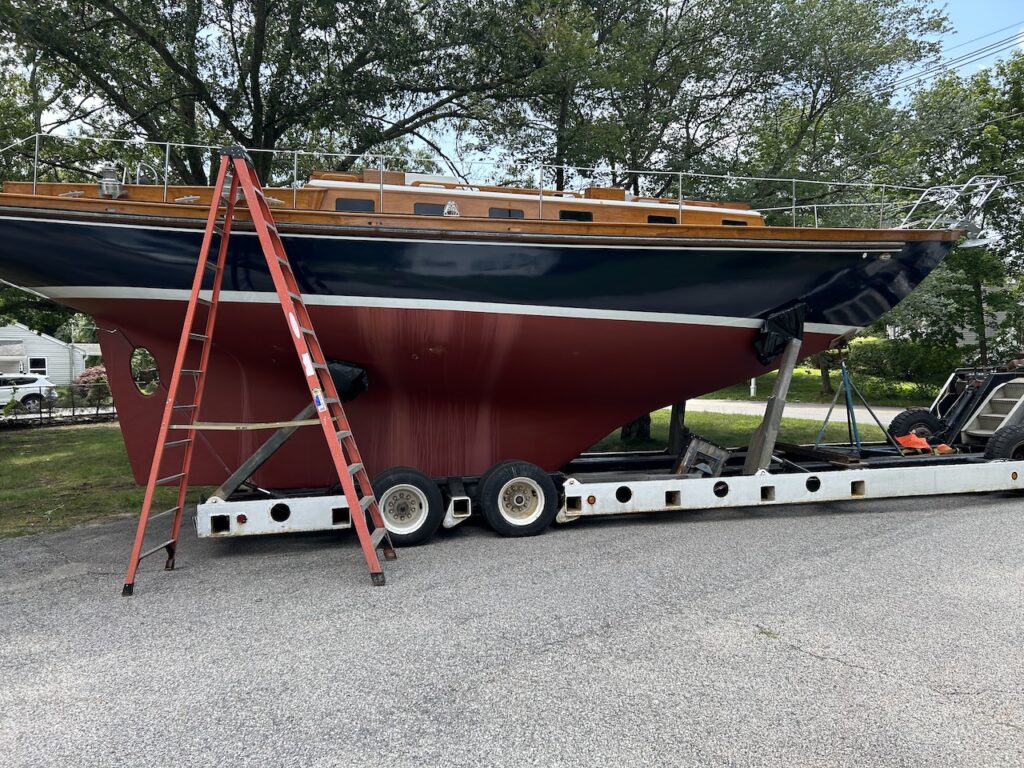
As we were getting onto Rt. 4 South, the bow stand lost its footing and we had to stop on the onramp to put it back in place. (The person in the photo below is the boat mover.) While we were thus stopped, I had my first opportunity to interact with a stranger who saw the boat. A man and his son were entering the onramp, and stopped for about 30 seconds to gush about RUCKLE’s beauty and ask if I would be sailing around the world (I won’t), and before continuing on the father begged the son to take a few good pictures. If I were modest I’d say this episode caught me off guard, but I’m not and it didn’t. Philip Rhodes designed some of the most graceful sailing yachts, and the Offshore 40 (/Rhodes Reliant) is emblematic of his architectural genius.
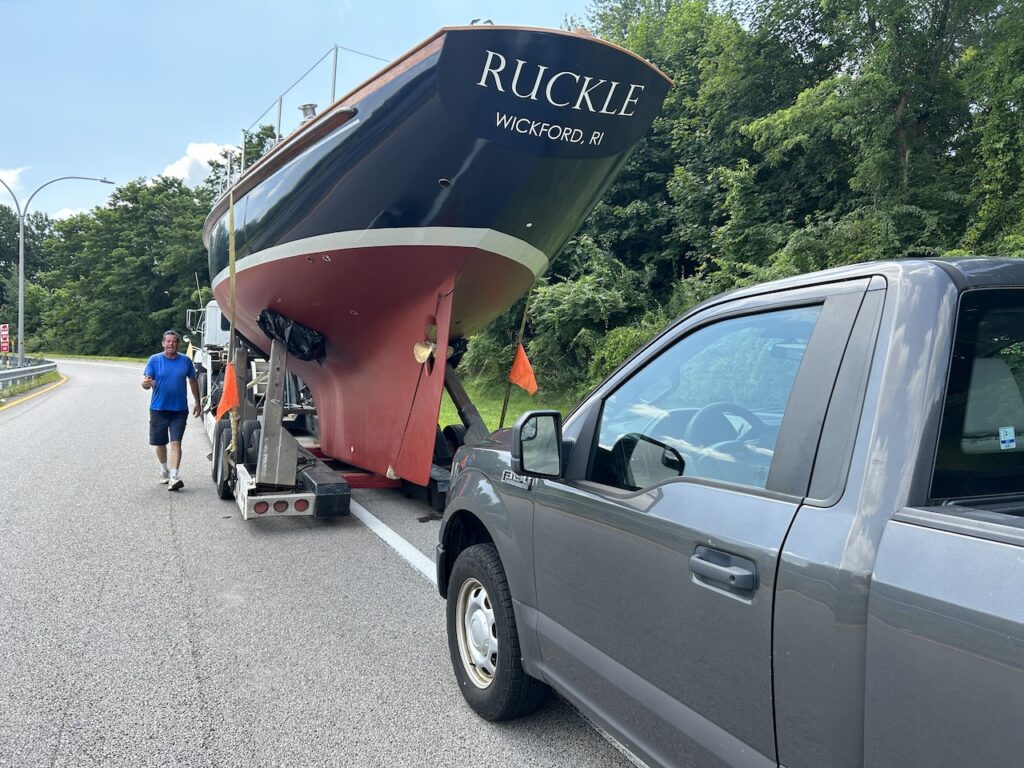
Here is a short biography of Philip Rhodes, courtesy of Mystic Seaport:
Philip L. Rhodes (1895-1974) was a prolific, lifetime designer of all types of vessels from small recreational dinghies to large yachts, commercial cargo and military vessels. He designed in power and sail, for construction in wood, metals, and fiberglass. He wrote articles and published his designs in many periodicals, including Yachting, Rudder, Motor Boat, and Motor Boating. He was a 1918 graduate of MIT in naval architecture and marine engineering and during World War I he worked for the Army Corps of Engineers. He later was employed by several firms including the American Shipbuilding Co., Lorain, Ohio, and the Union Shipbuilding Company, Baltimore, Maryland. He was also self-employed in New York City by 1925. In 1934 he joined with Cox & Stevens, Inc., New York City, and in 1947 the firm became Philip L. Rhodes, Naval Architects and Marine Engineers. Mr. Rhodes was an active designer until his death at age 79.
More from Wikipedia:
Rhodes designed a wide variety of vessels from 7′ dinghies to 123′ motor-sailors, from hydrofoil racers to America’s Cup winners – his 12 Meter class Weatherly (USA-17) winning the 1962 defense. His work also included large motor yachts, commercial and military vessels such as minesweepers and police boats. His clients ranged from Rockefellers to Sears & Roebuck.
Rhodes was born in 1895 in Thurman, Ohio. He attended MIT, graduating in 1918 in naval architecture and marine engineering. He worked for the US Army Corps of Engineers during World War I. After the war he began work as a shipfitter in Lorain, Ohio. He later moved to New York where he opened a small office as a marine architect.
Rhodes joined the design firm of Cox & Stevens in 1934, becoming head naval architect there after the death of lead designer Bruno Tornroth in 1935. In 1946, the firm of Philip L. Rhodes succeeded Cox & Stevens Inc. It closed in 1974 following Rhodes’s death.
Rhodes formed his own company, Philip L. Rhodes, Naval Architects and Marine Engineers.
Rhodes was one of the pioneers in the transition to fiberglass construction. The Bounty II for Coleman Plastics and Aeromarine in 1956 became one of the earliest yachts built of fiberglass, and established the viability of the new material for larger production boats.
The boat was transferred from trailer to travelift at the marina:
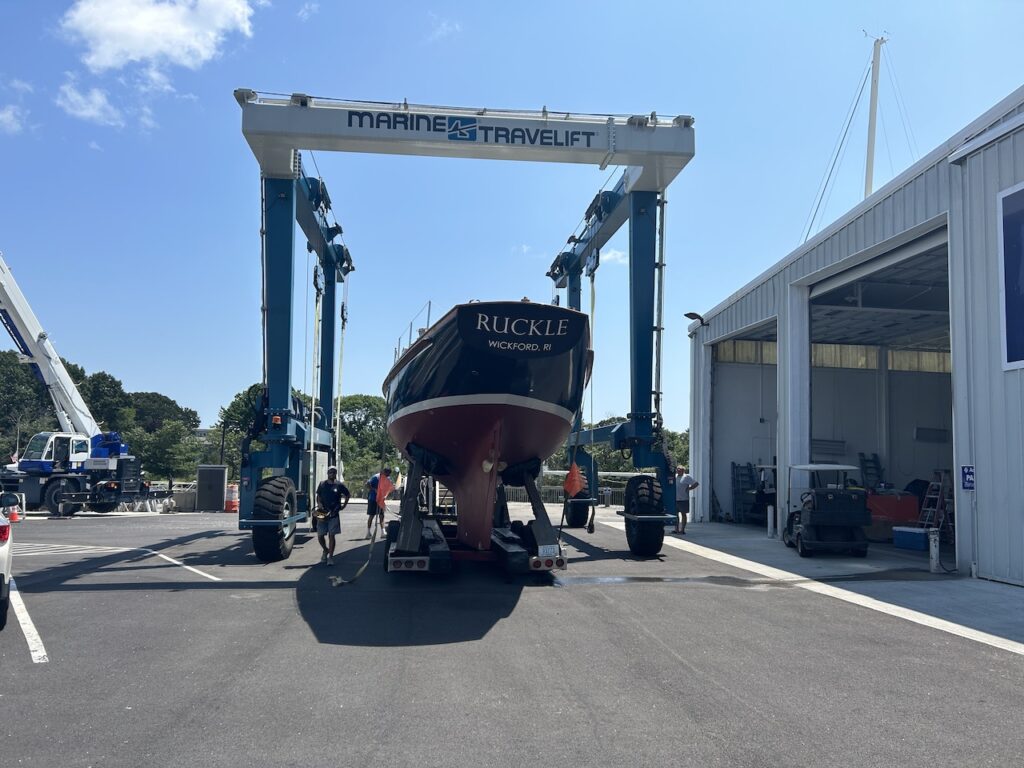
Videos:
Meanwhile, we went back for the masts and booms. Video:
I missed the “splash” while working on the masts, but here she is in the marina:
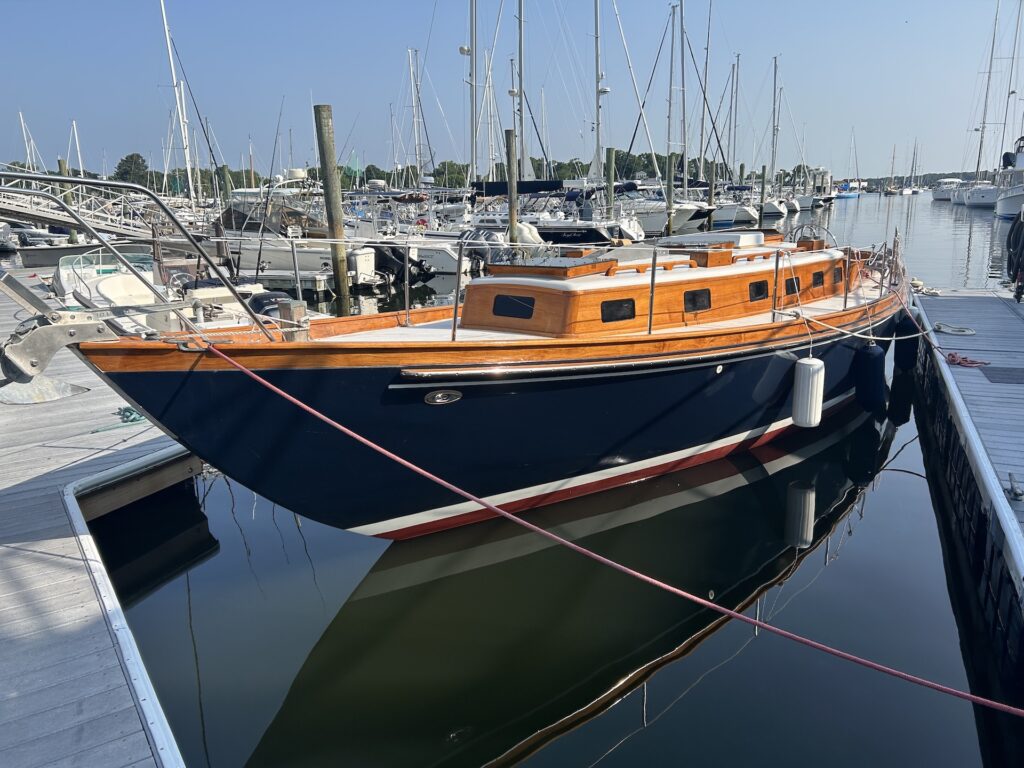
Mast-stepping had to wait fort the next day, but afterwards I moved her to the Yacht Club:
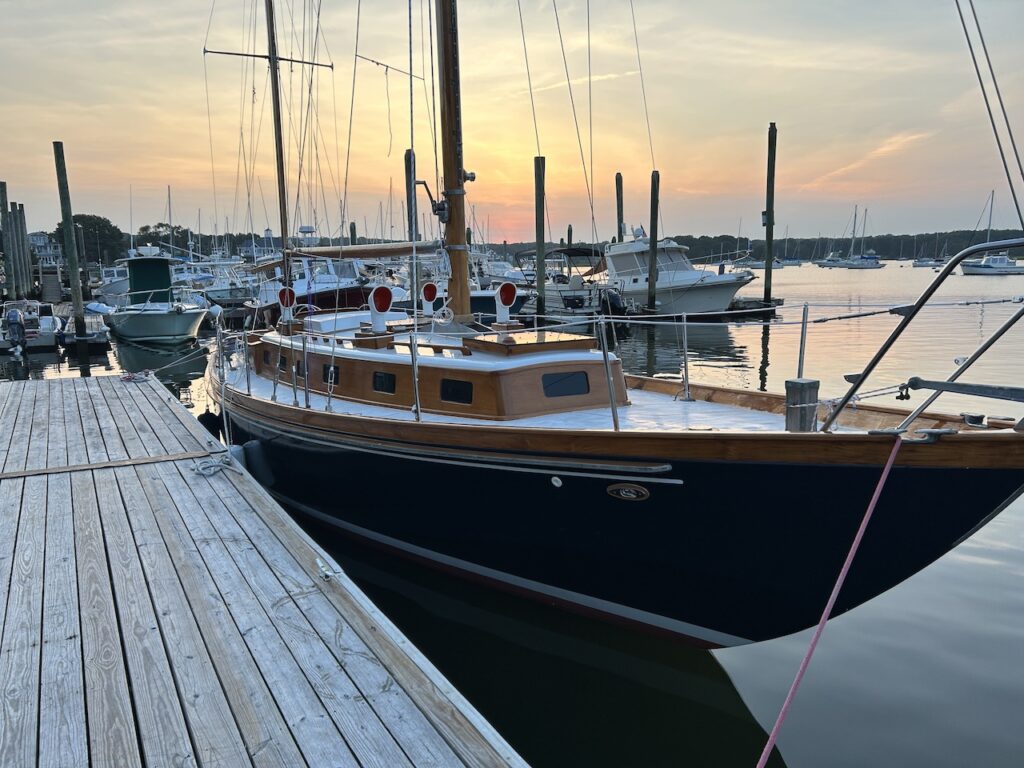
A day later. I took the following photo from the rooftop deck (not my dinghy on the dock):
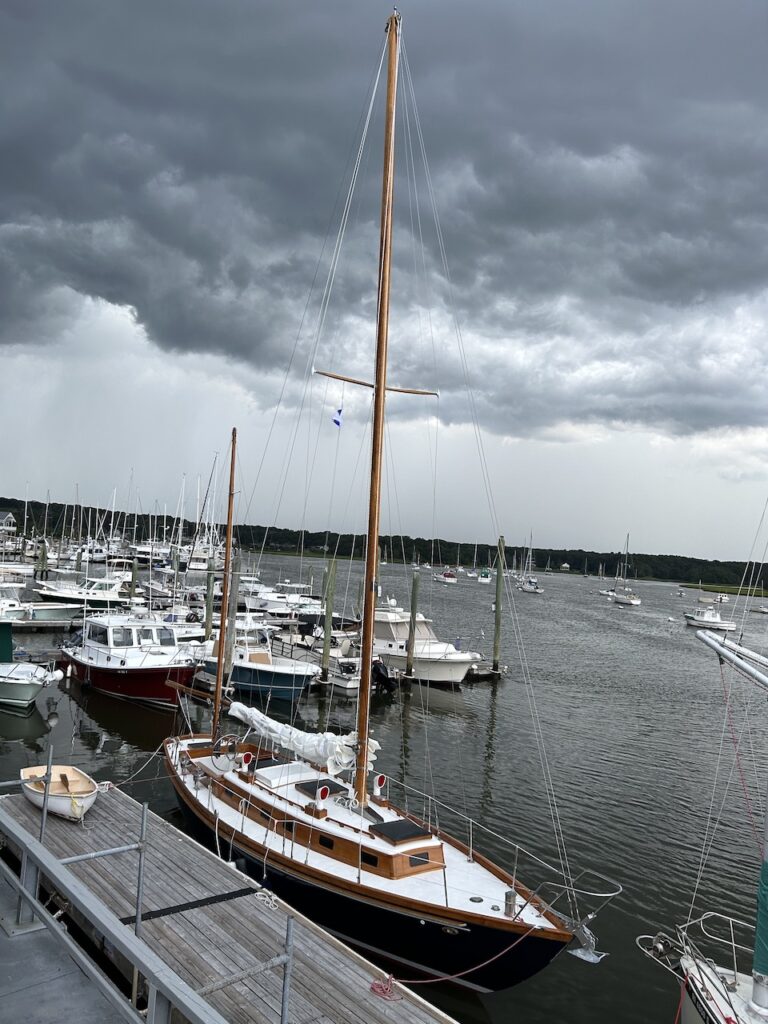
Two days later, the first sail happened, and all systems that were tested passed. I had her heeled down to the rail on both starboard and port tacks, but the water was smooth, so I consider this only a moderate stress test. (The two photos below don’t illustrate “heeled down to the rail”, but do illustrate starboard and port tack, respectively.)
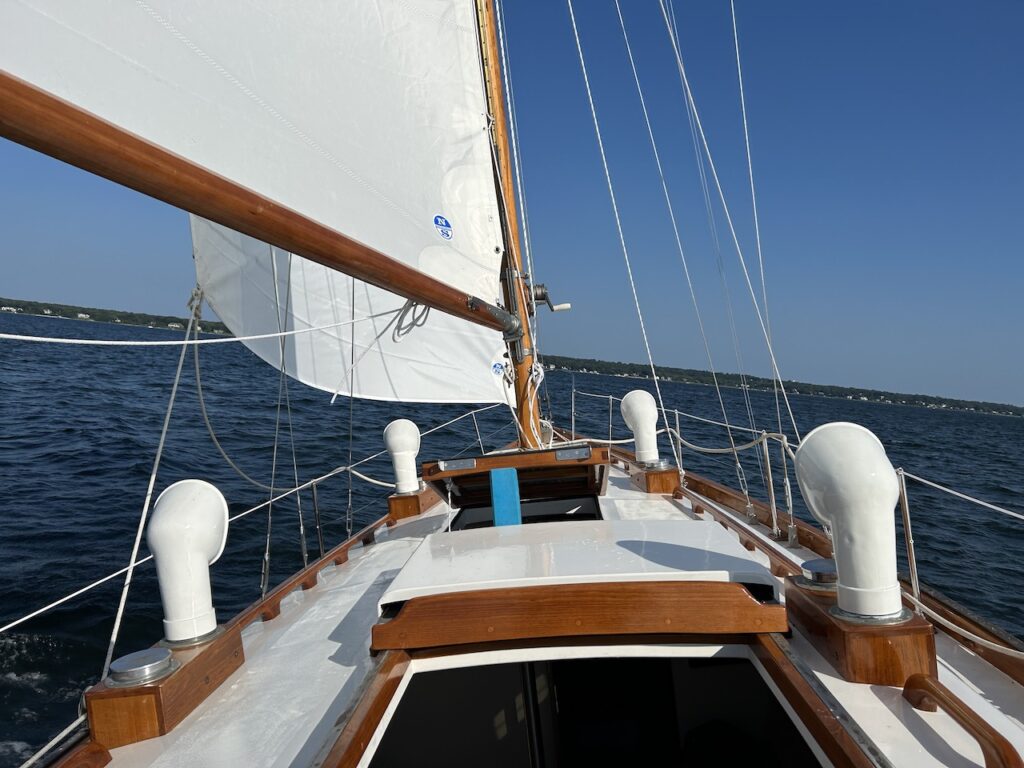
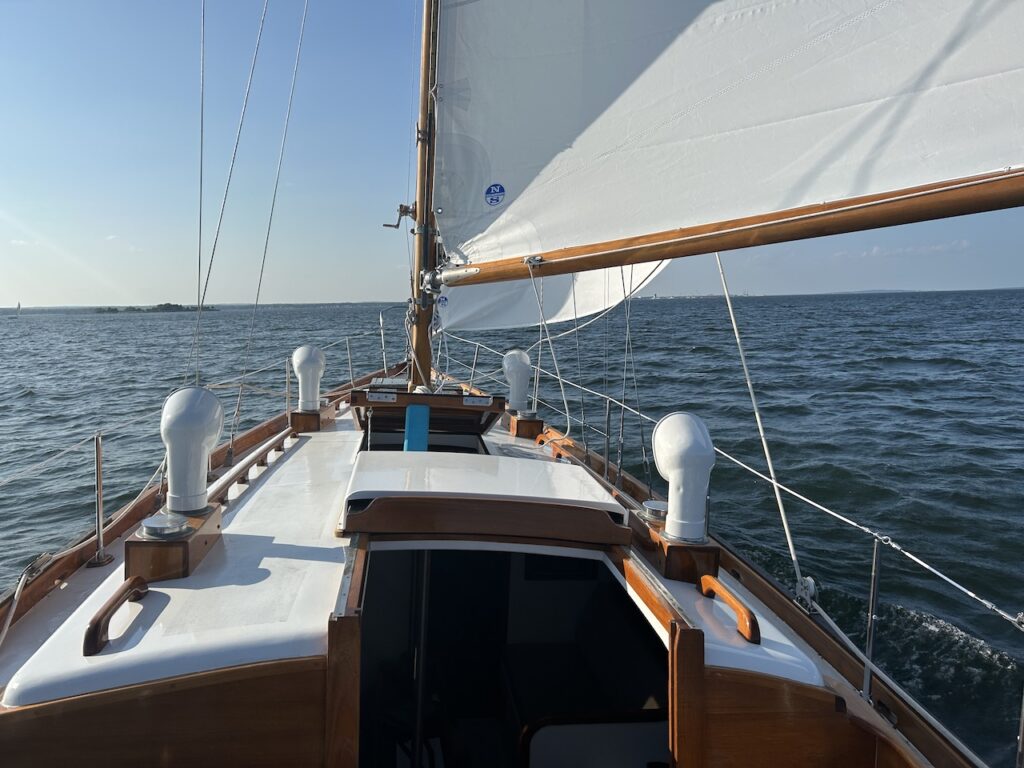
Back at my rented summer mooring:
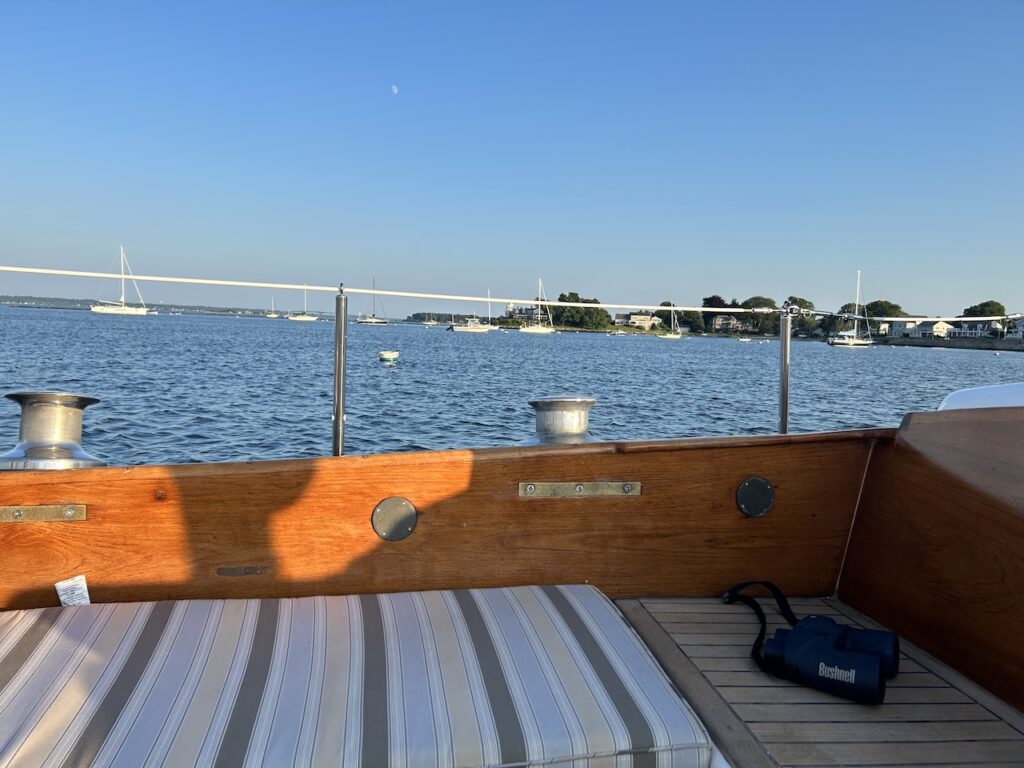
The mizzen main has not yet been set up:
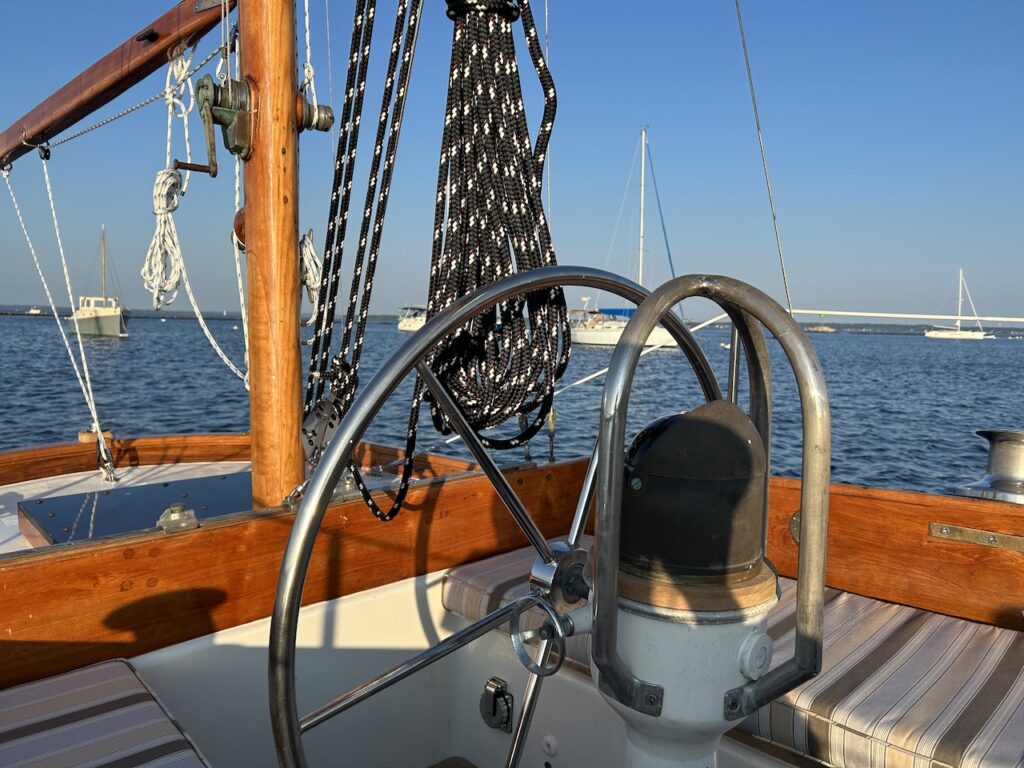
Two videos while under sail:
This website was born in 2014. Its purpose has been to maintain a detailed record of the restoration work. Many posts have been an indispensable reference for subsequent work. It has allowed people who live far away, or otherwise cannot visit the boat, to follow along. It was extremely valuable in obtaining a favorable survey and obtaining insurance. Someday it may be a valuable resource when selling the boat.
In between now and selling the boat, I think this website will focus only on major upgrades and repairs, and thus the posts will be much less frequent. On the other hand, next week you may see a post about how well the icebox keeps ice (really well, if you’re wondering). We’ll see.